Abstract
Focusing on the central wholesale market for vegetables in Japanese agriculture, according to the latest data from December 2022, the total trading volume of vegetables was up to 464kt, the trading amount was up to 100 million yen, and the average price was 216 yen/kg. These figures indicate a booming agricultural market in Japan. The current trend indicates high demand. High trade volumes and values indicate high consumer demand for vegetables and abundant business opportunities for farmers and wholesalers in the market. Additionally, the average price of 216 yen/kg suggests that vegetable prices are showing a certain degree of stability. This stability indicates that demand and supply are in balance and price fluctuations for agricultural products are relatively moderate. These characteristics suggest that Japan’s agricultural market is in a stable and mature stage, but it will be interesting to see how the market will change in the future due to factors such as changes in demand and climatic conditions.
Vegetable meter quantity.
Analyzing data from January 2006 to December 2022 on central wholesale markets for agricultural vegetables in Japan, the total trading volume of vegetables peaked in October 2006, reaching 820 kt at that time. However, looking at the subsequent trends, current trading volume has fallen to 56.5% compared to the peak. There are several factors behind this trend. First, there is a change in people’s eating habits. In recent years, Japan’s food culture has become more diverse, and the demand for eating out and processed foods has increased, which may be decreasing the demand for fresh vegetables. Another factor may be the increase in urban population and changes in lifestyle, which are leading to an increase in consumers purchasing locally grown vegetables from home gardens or local farmers’ markets. Furthermore, international competition also has an impact. Japan’s agricultural market is facing competition not only from within the country but also from imported vegetables from overseas, resulting in intensifying price and quality competition. Taking these factors into account, while vegetable trade volumes are declining, there may also be an increase in demand for locally grown vegetables and high value-added varieties. Going forward, agricultural producers and wholesalers will need to develop new strategies and respond to changes in the market in line with consumer preferences and market trends.
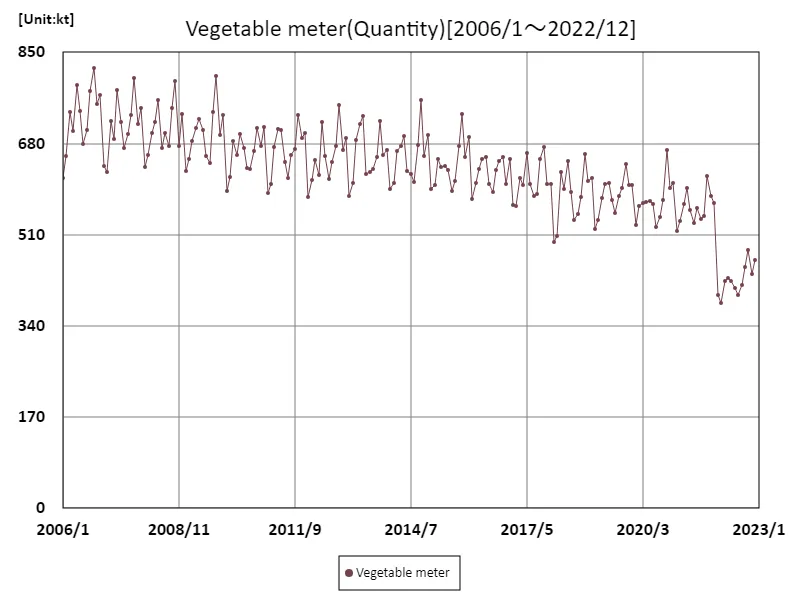

The maximum is 820kt[2006年10月] of Vegetable meter, and the current value is about 56.5%
Vegetable meter price.
When analyzing data on the prices of vegetables in Japan’s agricultural central wholesale markets by prefecture up to December 2022, the maximum overall price for vegetables is 184 million yen, which is the current maximum value. One of the characteristics that can be seen from this data is that prices vary from prefecture to prefecture. The balance of supply and demand in a particular region, as well as weather conditions, affect prices. Additionally, factors such as seasons and holidays may affect prices. For example, demand increases during holidays such as New Year’s and Obon, and prices tend to rise. Furthermore, the fact that the maximum price is now at its highest suggests that Japan’s vegetable market is expanding and demand is increasing. This is thought to be due to factors such as consumers becoming more health-conscious and concerned about food safety, as well as the increasing efforts to promote local production and consumption. However, price fluctuations also involve risks. For example, climate change and natural disasters can cause production volumes to decrease and prices to rise. Changes in international economic conditions and trade policies may also affect prices. Going forward, agricultural producers, related businesses, and the government will need to work together to consider various measures to ensure stable price formation while maintaining a balance between supply and demand.
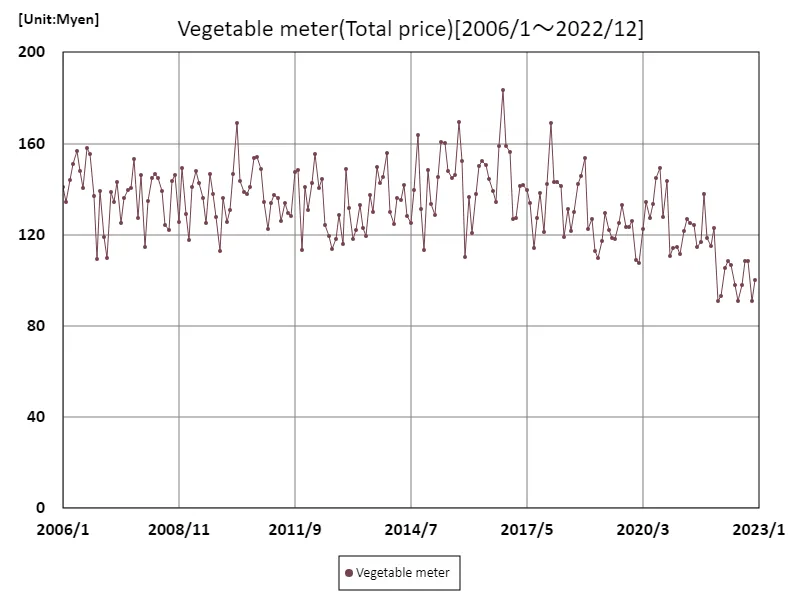

The maximum is 184Myen[2016年10月] of Vegetable meter, and the current value is about 54.5%
Vegetable meter price.
Analyzing data on central wholesale market prices of vegetables in Japanese agriculture from January 2006 to December 2022, the price peaked in January 2018 at 288 yen/kg. However, subsequent trends show that prices are now at 75% of their peak. There are several factors that could be contributing to this price fluctuation. First, there is the fluctuation in production volume. Production volumes fluctuate due to climatic conditions and advances in agricultural technology, which in turn affect prices. Changes in demand also affect prices. Demand for vegetables fluctuates depending on consumer preferences and economic conditions, which is reflected in prices. Additionally, international factors also influence prices. Price fluctuations in the international market and increases or decreases in import volumes can affect domestic price formation. On the other hand, lower prices have a positive side for consumers. It is expected that being able to purchase vegetables at low prices will reduce the burden on consumers’ living expenses and ensure a stable supply of food. But lower prices can also mean lower profits for farmers. For this reason, the government and related agencies need to consider measures to support agricultural producers and stabilize markets. Going forward, various efforts will be needed to stabilize prices while taking into account the balance between supply and demand.
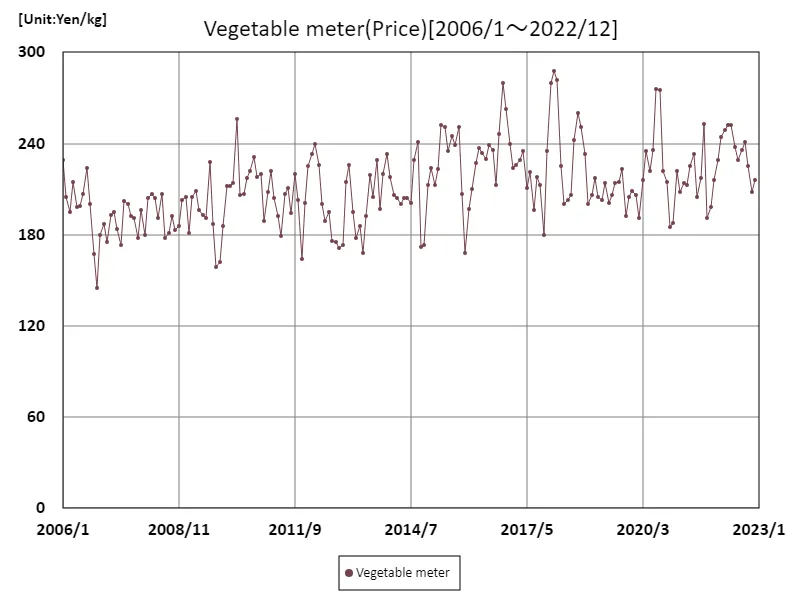

The maximum is 288Yen/kg[2018年1月] of Vegetable meter, and the current value is about 75%
Vegetable meter price (most recent).
Looking at data from January to December 2022, central wholesale market prices for vegetables in Japan’s agricultural sector peaked at 252 yen/kg in April 2022. However, looking at subsequent trends, current prices have fallen to 85.7% of their peak. There are many factors that contribute to this price fluctuation. First, there is the effect of seasonality. Vegetable prices fluctuate significantly depending on the season and are affected by changes in production volumes, weather conditions and demand. Prices are also affected by changes in domestic and international economic conditions and trade policies. For example, fluctuations in the prices of imported vegetables and the relaxation of import restrictions may affect prices. Additionally, changing consumer tastes also affect prices. Factors such as growing health consciousness and increased demand for certain vegetables contribute to price fluctuations. On the other hand, lower prices have a positive side for consumers. It is expected that being able to purchase vegetables at low prices will reduce the burden on consumers’ living expenses and ensure a stable supply of food. But lower prices can also mean lower profits for farmers. For this reason, the government and related agencies need to consider measures to support agricultural producers and stabilize markets. Going forward, various efforts will be needed to stabilize prices while taking into account the balance between supply and demand.
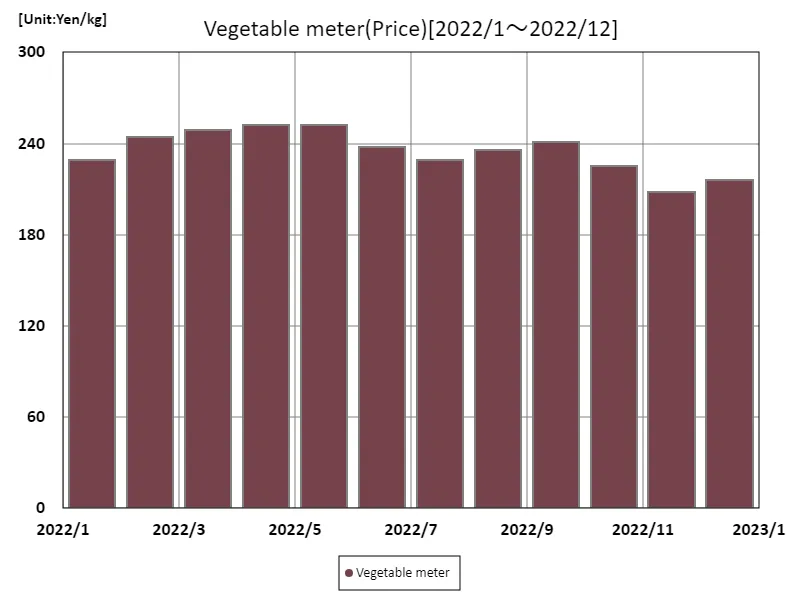

The maximum is 252Yen/kg[2022年4月] of Vegetable meter, and the current value is about 85.7%
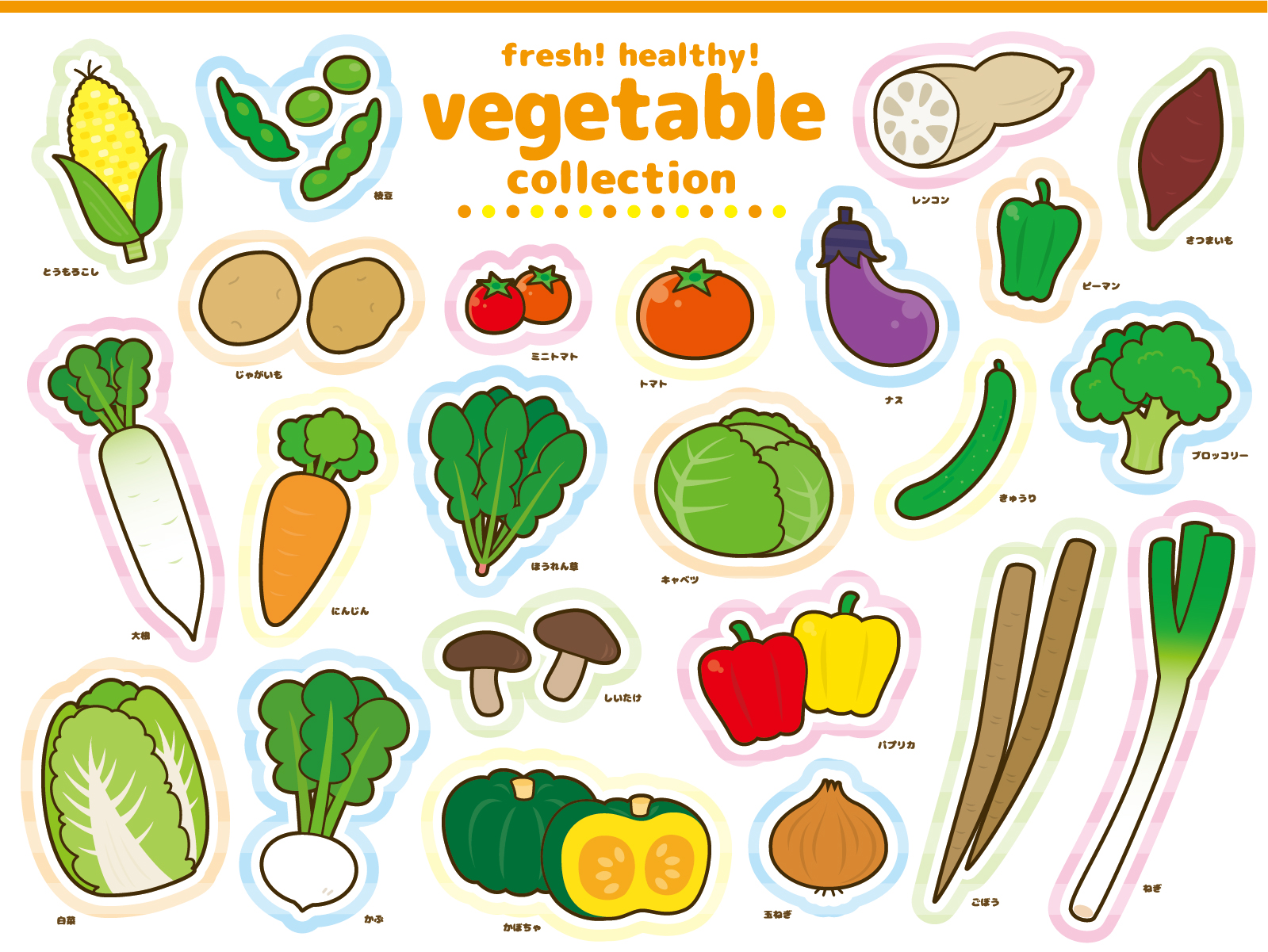


Comments